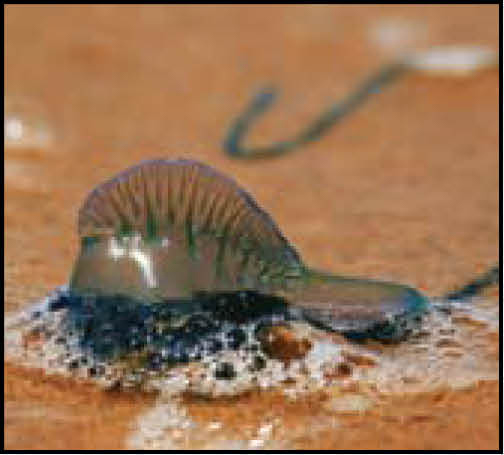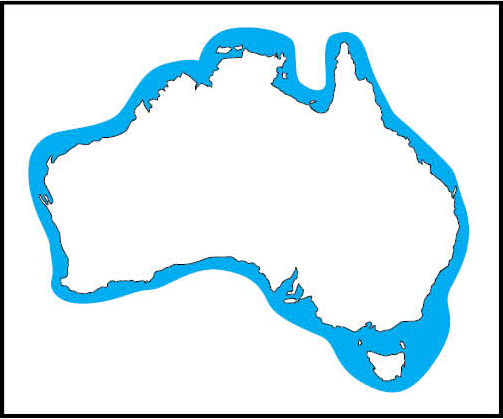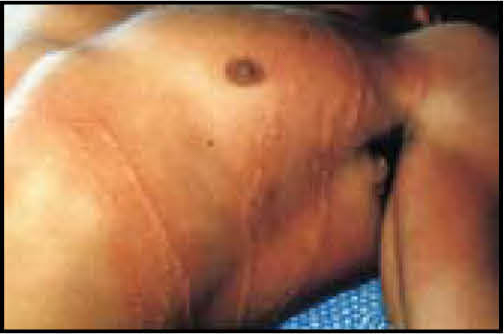Bluebottle, Portuguese man-o-war, Pacific man-o-war

Physalia physalis
Bluebottle, Portuguese man-o-war, Pacific man-o-war

Physalia physalis
Air-filled sac up to 8cm in length, usually with a single, long, blue main fishing tentacle hanging underneath. This may contract to a few centimetres or extend to cover over 10 metres in length. Some may have numerous main fishing tentacles and can cause painful stinging.

Size relative to human
Australia wide and in most warm oceans worldwide.

Distribution in Australian waters

Physalia sting
Bluebottles are a different type of jellyfish called siphonophores. Bluebottles are colonial hydrazoans, made up of four types of specialised and highly modified individuals (polyps). The polyps are dependent on one another and each performs a different function to ensure their survival.
Bluebottles are the most common cause of marine stings in Australia, with 1 in 6 Australians reporting to have been stung by a bluebottle.